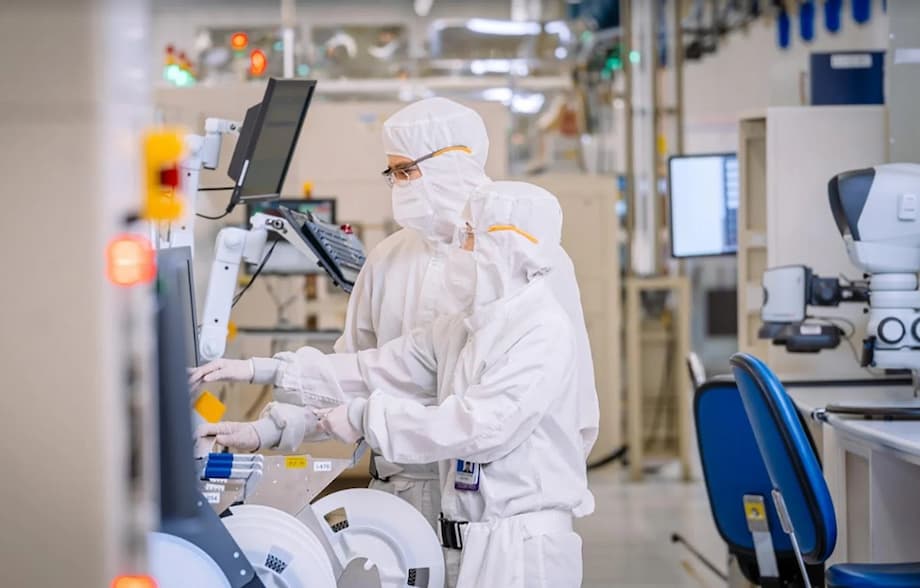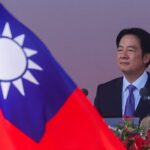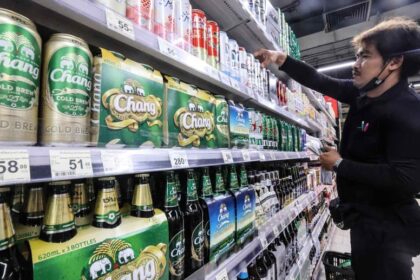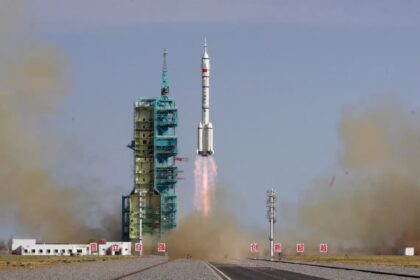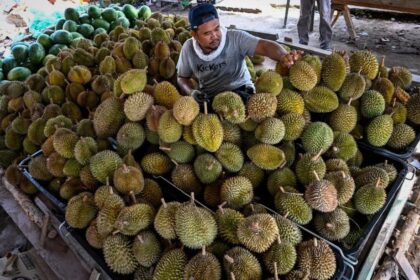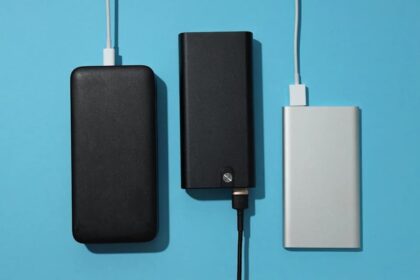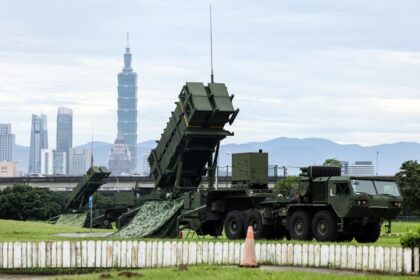Why this cross border scheme matters now
Singapore and Vietnam have switched on a new pipeline for early career innovators, opening two way placements of up to two years in high demand fields such as artificial intelligence, data science, cybersecurity, and semiconductors. The Innovation Talent Exchange, agreed by both governments at their 19th Connectivity Ministerial Meeting in Hanoi, is designed to give young professionals regional experience while helping companies fill skill needs across two of Southeast Asia’s most dynamic tech markets. The two sides have set an annual quota of 300 applications and have begun preparing to accept submissions after completing system updates and final checks.
- Why this cross border scheme matters now
- How the Innovation Talent Exchange will work
- Who can apply and the key criteria
- What jobs are on offer and how pay compares
- Why the timing is strategic
- What companies should prepare
- What candidates can do now
- Beyond talent: investment, infrastructure, and supply chains
- Brain drain or brain gain
- How to get started
- What to watch in the next six to twelve months
- Key Points
Interest is already visible. Thirty companies and 53 individuals from sectors that include technology, biomedical technology, banking and finance, and tertiary institutions have registered interest, according to Singapore’s Ministry of Trade and Industry. These are early signals rather than formal applications, but they hint at strong appetite for cross border talent flows as both economies step up cooperation under a Comprehensive Strategic Partnership agreed earlier this year.
How the Innovation Talent Exchange will work
The programme connects eligible candidates with companies in the partner country for roles directly tied to innovation and advanced technologies. Assignments can last up to two years. This format gives participants enough time to contribute to products or platforms, ship features, and complete full project cycles, while giving employers a clear window to plan onboarding, review periods, and knowledge transfer.
In public guidance, Singapore’s Ministry of Trade and Industry sets out the intent plainly. After introducing the scheme together with Vietnamese counterparts, the ministry describes the aim as strengthening both innovation ecosystems through practical work experience on the ground in each country.
MTI’s official description states the core purpose of the scheme.
Singapore’s Ministry of Trade and Industry says: “The Programme will enable Singaporean professionals to seek working stints in eligible innovation related areas of work in Vietnam, and vice versa.”
What counts as innovation roles is intentionally broad to reflect how digital capabilities cut across sectors. Beyond AI, analytics, and cybersecurity, participating companies may hire for cloud engineering, Internet of Things projects, virtual and augmented reality, application and system programming, digital product management, and semiconductor design, fabrication support, or test engineering. Financial services, healthcare technology, logistics, and advanced manufacturing firms are all candidates for participation if the roles advance new technologies or processes.
Timeline, quota, and application flow
The two governments have completed most of the plumbing behind the scenes. Application procedures and online systems have been adapted, and agencies are preparing to start accepting and processing applications. Officials have indicated that a dedicated digital platform to match candidates with employers is expected to open for registrations around July. The annual quota is set at 300 applications for now, and the authorities plan to contact companies and individuals that have already expressed interest to guide them through first steps.
At the Hanoi ministerial meeting, both sides also reviewed broader economic projects that complement talent mobility, including an investment certificate for Keppel’s Saigon Centre Phase 3, a digital transformation work plan by Grab Vietnam with the Da Nang People’s Committee, and an off airport cargo terminal in Phu Tho province built by YCH Group and T&T Group. These projects add context to why demand for skilled workers is rising in both markets.
Who can apply and the key criteria
The programme is aimed at young professionals at the start of their careers. Current parameters discussed by the two governments indicate the following broad eligibility ranges and requirements. The details below capture the general thrust and may be refined as final application pages go live.
- Duration: Up to two years, fixed for the ITX placement.
- Age: Vietnamese candidates seeking roles in Singapore are expected to be 30 or younger. Singaporeans going to Vietnam may be up to 33 with a bachelor’s degree, or up to 35 with a diploma or junior college qualification.
- Education: A bachelor’s degree is the baseline, typically from an approved list of institutions. Some pathways may accept diplomas with stronger experience.
- Experience: Singaporean applicants to Vietnam generally need at least three years of work experience with a bachelor’s degree or five years with a diploma. Vietnamese applicants to Singapore may not need prior work experience, reflecting the focus on early career talent and on the training that employers will provide.
- Language: Proficiency in English is essential for most roles, especially those in multinational teams or customer facing positions. Vietnamese language ability helps for Singaporeans heading to Vietnam, but many tech teams in Ho Chi Minh City and Hanoi use English for day to day collaboration.
Recruitment channels will differ by market. Vietnamese employers are expected to list open roles on the national employment portal and then complete hiring through the programme framework. Employers in Singapore can use their usual hiring channels. Candidates must meet each company’s selection criteria and also satisfy immigration and work pass requirements. The two year window is specific to ITX. After finishing an assignment, participants who wish to stay longer would need to apply for other visa pathways that match their situation and the host country’s rules.
What jobs are on offer and how pay compares
Demand spans a wide mix of roles. Based on early signals, companies will seek talent for:
- Data science, analytics, and machine learning, including model development and MLOps
- Cybersecurity and risk management, especially cloud and application security
- Cloud engineering and platform architecture
- Internet of Things projects in manufacturing, logistics, and smart city applications
- AI, computer vision, and natural language systems
- Virtual and augmented reality for training, retail, and entertainment
- Software, mobile, and systems engineering
- Semiconductor related functions such as design verification, test, and yield analysis
Salary ranges reflect market conditions. For Vietnamese professionals working in Singapore, monthly pay on offer typically starts around S$3,000 to S$5,000 for fresh graduates and junior roles, with senior technical positions reaching S$10,000 in select cases. For Singaporeans going to Vietnam, compensation is competitive relative to Vietnam’s market for foreign specialists in AI, cloud, and chip related roles. Packages often include relocation support or housing allowances, and take home pay can stretch farther in Ho Chi Minh City and Hanoi because of living cost differences.
Pay is only part of the draw. Two years on the ground in a different market lets participants build problem solving experience with diverse users and business models. Vietnam’s fast growing consumer internet scene and manufacturing base expose engineers to scale and hardware integration. Singapore’s deep tech, finance, and healthcare sectors give Vietnamese talent a path to learn in regulated environments and on global product teams. Those contrasts create a training effect that is hard to replicate in a single market.
Why the timing is strategic
The talent exchange sits inside a much wider push to align economic growth and innovation between the two countries. In March, Singapore and Vietnam upgraded their relationship to a Comprehensive Strategic Partnership. That move set a higher bar for cooperation across energy, digital economy, supply chains, education, and security. The Hanoi meeting that advanced ITX also marked progress in other areas that will shape demand for skilled workers.
Energy connectivity is top of the list. Both sides reaffirmed plans to import low carbon electricity from Vietnam into Singapore. The concept is straightforward. Renewable projects such as offshore wind in Vietnam generate power that can be delivered through subsea cables to Singapore. This plugs into the long running ASEAN Power Grid vision, under which member states aim to trade electricity across borders to balance supply and demand and give investors confidence to build large projects.
They also agreed to operationalise a carbon credits implementation agreement under Article 6 of the Paris Agreement. Article 6 sets the rules that let countries cooperate on cutting emissions by trading verified reductions. For companies, this can translate to a pipeline of high quality carbon projects, together with clear rules on how credits can be used toward national targets. Singapore’s financial sector and Vietnam’s renewable potential make this a natural fit.
Beyond energy, agri food trade will expand under a joint task force between the Singapore Food Agency and Vietnam’s Ministry of Agriculture and Environment. The two sides are also working on cross border digital payments. Agencies have highlighted efforts by Singapore’s NETS and Vietnam’s National Payment Corporation to bring QR code payment connectivity live, which would let travelers and small businesses accept each other’s payment apps easily. Each of these initiatives creates downstream demand for talent in cyber, fintech, data engineering, logistics, and compliance.
What companies should prepare
Employers on both sides can start planning now, even before the application portal opens. A clear plan improves the odds of hiring the right person and making the most of a two year window.
- Scope the role precisely. Map how the candidate’s work will drive a product milestone, a platform upgrade, or a research plan. Tie goals to measurable deliverables in the first 6, 12, and 18 months.
- Design onboarding for a different market. Plan training on internal systems and local regulations. Give time for language and cultural acclimatisation. Identify a mentor to help the newcomer navigate internal networks.
- Plan compliance early. Check the host country’s work pass rules, qualifications checks, and any sector specific requirements such as data handling or financial licensing. Align payroll and tax handling before arrival.
- Set a knowledge transfer plan. Schedule brown bag sessions and internal documentation so that the know how gained during the assignment remains with the team.
- Budget for relocation and support. Include housing, medical cover, and return flights. Review market pay benchmarks regularly to stay competitive as demand shifts.
Human resource teams may also want to refresh performance frameworks for two year assignments. Clear promotion criteria, bonuses tied to milestones, and a pathway to permanent roles or alumni networks help retain the benefits after the assignment ends.
What candidates can do now
Ambitious graduates and early career professionals can begin lining up prerequisites while the formal application window opens.
- Strengthen English proficiency. Employers have stressed that English is required for collaboration and documentation. Consider targeted courses or certification if needed.
- Build a portfolio. Show code repos, data projects, security audits, design notes, or chip design coursework. Results speak louder than resumes.
- Target a niche. Choose a focus such as cloud security, model optimisation, embedded systems, or data engineering. Deep skill in one area makes you stand out.
- Collect references. Lined up referees make background checks faster and strengthen applications.
- Prepare for interviews across time zones. Practice live coding, system design, and case interviews. Research the host country’s workplace culture and norms.
The programme does not specify a minimum GPA. That gives space for candidates who demonstrate ability through real projects and internships. For Vietnamese candidates eyeing Singapore roles, short courses from recognised providers in AWS, Google Cloud, or cybersecurity standards can bridge skill gaps. For Singaporeans going to Vietnam, a basic Vietnamese language course improves daily life and team dynamics.
Beyond talent: investment, infrastructure, and supply chains
The exchange programme is one part of a larger economic story. Singapore remains a top investor in Vietnam by cumulative value, with more than 4,000 projects and investment stock above US$80 billion. Foreign direct investment into Vietnam climbed in the latest reporting periods, and Vietnamese investment into Singapore has also grown steadily. Rising flows run both ways as companies build in Vietnam for manufacturing scale and in Singapore for finance, research, and regional headquarters.
On the ground, new projects showcase this momentum. Keppel’s next phase at Saigon Centre extends a long running commercial hub in Ho Chi Minh City. The digital transformation plan in Da Nang pairs a global platform with a dynamic city government to improve services and small business tools. The off airport cargo terminal in Phu Tho adds logistics capacity away from the runway, handling security screening, storage, and transfers. Each of these projects opens real tasks for software engineers, data analysts, security specialists, and logistics technologists.
Connectivity is expanding in bits and volts. Work is underway on a framework for subsea power cables that would support cross border electricity trade. At the same time, payment regulators and network operators are building systems for instant QR payments between the two countries. This mix of physical and digital links raises the need for professionals who can work across disciplines, from grid modelling and cable routing to cybersecurity and fraud detection.
Brain drain or brain gain
Any cross border talent programme prompts debate about whether sending bright graduates abroad drains domestic capability. The design of ITX points toward the opposite. The two year cap, the two way structure, and the focus on early career candidates all aim to build experience and networks that return to the home ecosystem. Vietnamese officials at the launch events stressed that time abroad is intended to raise capability at home, and that many high caliber professionals eventually return because compensation is only one factor in career decisions.
Companies also benefit from the exchange effect. A Singaporean engineer who has built data systems for retail in Ho Chi Minh City gains practical insight that translates to better regional products. A Vietnamese cybersecurity specialist who has secured fintech systems in Singapore can bring back playbooks that help local firms raise standards. Those gains compound as alumni take on leadership roles.
How to get started
Government agencies have said they will begin accepting and processing applications soon and will reach out to parties that have registered interest. Companies that want to participate can prepare job descriptions tied to innovation outcomes and ensure internal processes are ready. Candidates can assemble documents, update portfolios, and keep watch for the registration portal opening.
For official programme information, including scope and eligibility, refer to Singapore’s Ministry of Trade and Industry page on the Innovation Talent Exchange. The page will update as application details go live. Visit the MTI programme overview at this link.
What to watch in the next six to twelve months
Observers will track three early markers of success. First, how quickly the initial quota of 300 is filled and the mix of roles taken. Second, the breadth of participating employers, from startups to large platform companies to industrial firms. Third, whether the programme catalyses complementary cooperation, such as joint training for semiconductor engineers between top universities, or new testbeds for AI and clean energy projects under the broader bilateral agenda.
Results in these areas would confirm that talent mobility is aligning with investment and infrastructure plans agreed by both governments.
Key Points
- Singapore and Vietnam launched a two way Innovation Talent Exchange for up to two year placements in innovation roles.
- Annual quota stands at 300 applications, with systems prepared to start accepting and processing submissions soon.
- Early interest includes 30 companies and 53 individuals across tech, biomedical, finance, and tertiary institutions.
- Eligible roles include AI, data science, cybersecurity, cloud, IoT, VR, software engineering, and semiconductor functions.
- Vietnamese candidates for Singapore roles are expected to be 30 or younger, while Singaporeans heading to Vietnam may be up to 33 or 35 depending on qualifications.
- Singaporean applicants to Vietnam generally need three to five years of experience based on qualification level, while Vietnamese applicants to Singapore may not require prior work experience.
- English proficiency is essential for most roles.
- Salary ranges for Vietnamese professionals in Singapore start around S$3,000 to S$5,000 a month, with senior roles reaching up to S$10,000.
- A digital platform for job matching and registration is expected to open for sign ups around July.
- The programme advances the new Comprehensive Strategic Partnership and aligns with joint work on energy connectivity, carbon credits, agri food trade, and digital payments.
- Recent projects highlighted at the ministerial meeting include Keppel’s Saigon Centre Phase 3, a Da Nang digital transformation plan, and an off airport cargo terminal in Phu Tho.
- Officials expect the programme to build skills and networks and to strengthen both innovation ecosystems over time.


